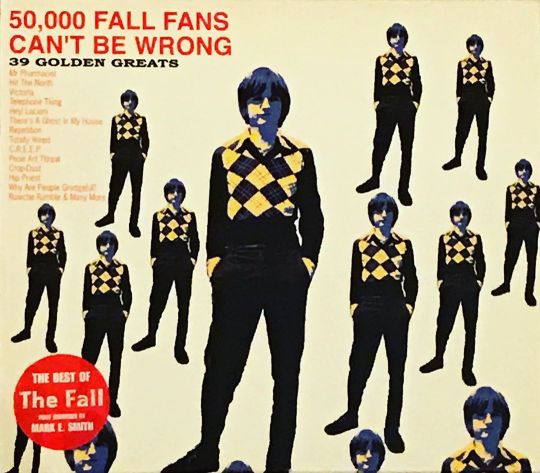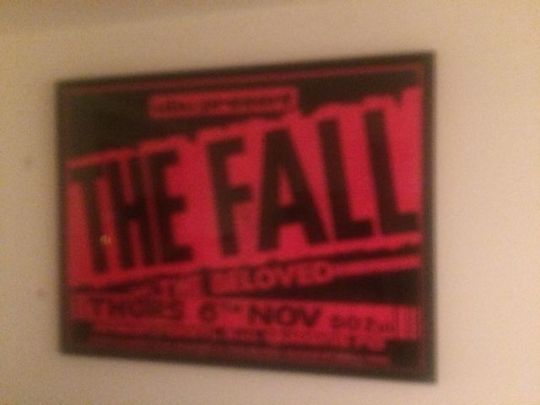#Proleartthreat
Explore tagged Tumblr posts
Text
Mikhail Lifshitz: Marxist Aesthetics and a Critique of Modern Art
What is important to me is to mark the main features of the worldview we are offered as the lodestar of the future art – the renunciation of realistic pictures, which Picasso sees as an empty illusion, that is, deception, and the affirmation of a wilful fiction, designed to spark enthusiasm, that is, the conscious deception of mythmaking. [...] Let’s just say that the main inner goal of such art lies in suppressing the consciousness of the conscious mind. A flight into superstition is the very minimum. Even better is a flight into an unimaginable world. Hence, the constant effort to shatter the mirror of life or at least to make it muddy and unseeing. Any image must now be given qualities of ‘unlikeness’. In the way, pictoriality recedes, eventually becoming something free of any association with real life. [...] Once it was enough to present a few geometrical figures on the canvas to avoid any associations. Now this is too little. The self-defences of consciousness are so refined that even abstract forms are reminiscent of something real. That requires an even greater degree of detachment. Hence, there appears anti-art, Pop Art, which largely consists of the demonstration of real things, enclosed in an invisible frame. In a sense, this is the end of a long evolution from real depictions to the reality of bare facts. It might seem we’ve already achieved that goal: the life of the spirit has ended, the worm of consciousness has been crushed. Still, that is an empty illusion. The ailing spirit’s attempts to jump out of its own skin are senseless and hopeless. When reflection revolves around itself endlessly, it only gives rise to ‘boring infinity’ and an insatiable thirst for the other. [...] Yes, ‘modern art’ is more philosophy than art. It is a philosophy expressing the dominance of power and facts on lucid thinking and poetic contemplation of the world. The brutal demolition of real forms stands for an outburst of blind embittered volition. It is the slave’s revenge, his make-believe liberation from the yoke of necessity, a simple pressure valve. If it were only a pressure valve! There is a fatal connection between the slavish form of protest and oppression itself. According to all the newest aesthetic theories, art’s effect is hypnotic: it traumatises or on the contrary blunts or calms a consciousness that no longer has any life of its own. In short, it is the art of a suggestible crowd at the ready to run after the emperor’s chariot. Why am I Not a Modernist? - Mikhail Lifshitz
Lifshitz's critique of modern art and its "hypnotic effect" targets modernism's romantic heritage and its animating desire for art to redeem what it sees as a fallen world through acts of a sovereign will possessed by a singular genius (hence the reference to the "emperors chariot"). Its no coincidence the notion of the genius is a quintessentially Roman notion that Walter Benjamin found in the works of none other than Goethe that entailed "the patriarchal idea that every culture, including bourgeois culture, could only thrive under the protection of and in the shadow of the absolute state." (Benjamin - Goethe: the Reluctant Bourgeois) Hitler's status as a failed artist, by now such a trite fact as to be included in the encyclopedia that is middle-brow pop historical consciousness, is a testament to the prevalence of this desire for a despot-as-artist that romanticism, among other things, has left in its wake. Fredric Jameson's antidote to the culture of the crowd seeking a new art school Ceasar is “a pedagogical political culture which seeks to endow the individual subject with some new heightened sense of its place in the global system…” (Cultural Logic of Late Capitalism. pg. 54). Lifshitz and Jameson endorse a realism that attempts to allow the masses to understand the world so they may one day change it.
3 notes
·
View notes
Photo

File Under Uneasy Listening. No doubt if Mark Edward Smith was still alive (he died in 2018) The Fall would still be churning out albums at a rate of knots. Roughly one a year since the band’s inception in 1976. 42 years, 32 studio albums (many many more EPs, live LPs, comps and others) and over 60 musicians passing through The Fall turnstiles is not so much ‘prolific’ as indecently voracious. This compilation album appears to have two subtitles: 39 Golden Greats and The Very Best Of The Fall 1978-2003 which together provide a pretty good description of its contents. If you’d been living under a rock during those years, and not heard of The Fall, then it still can’t possibly prepare you for what the music actually sounds like. Both loved and lambasted as a rowdier, rougher-round-the-edges version of The Smiths during the early 80s, this cheap comparison was massively incorrect. Most likely come up with by London-based music journalists who equated any band from Manchester as hewn from the same stone. I’m not sure how you’d describe their music. Genre-wise: post-punk, alternative, indie, all the usual meaningless labels. But in practice: rough jangling jarring guitars, frenetic drumming (often with two drummers), ‘songs’ which lurch seemingly indiscriminately from verse to chorus like some dazed drunk at the end of the night, and then Smith’s vocals over the top. Not so much ‘singing’ as ranting whatever thoughts were on his shopping list of ‘things to complain about’ that day. It’s hard to imagine that many of these songs were ‘hits’, in fact many performed highly on the UK Indie Charts (does that still exist?) and many more are a soundtrack to the grey grimness of the early 80s: Industrial Estate, Totally Wired, Eat Y’self Fitter. FOR FULL REVIEW & PLAYLIST CLICK LINK IN BIO #thefall #markesmith #totallywired #eatyselffitter #hitthenorth #proleartthreat #indiemusic #manchesterbands #compilationalbum #postpunk #recordcollection #nowlistening #nowplaying #randomrecordreview https://www.instagram.com/p/CFkENxVp8iF/?igshid=lqidksqddz6u
#thefall#markesmith#totallywired#eatyselffitter#hitthenorth#proleartthreat#indiemusic#manchesterbands#compilationalbum#postpunk#recordcollection#nowlistening#nowplaying#randomrecordreview
0 notes
Photo

#themightyfall #bigprinz #repetitioninthemusicandwerenevergonnaloseit #the77shitpile #ihaveseentgemadnessinmyarea #cugarettegoesoitwhenyouputitdown #proleartthreat
#the77shitpile#cugarettegoesoitwhenyouputitdown#ihaveseentgemadnessinmyarea#themightyfall#bigprinz#repetitioninthemusicandwerenevergonnaloseit#proleartthreat
0 notes
Text
What is Thinking? Part 5.

Jameson’s thoughts on the sublime mirror (and are no doubt directly influenced by) those of Lyotard in his return to Kant after denouncing the “wicked Lyotard” of Libidinal Economy (1974). Lyotard’s turn towards the sublime is prefigured in Libidinal Economy in his definition of Jouissance as an unbearable masochistic excess enjoyment blurring the line between pleasure and pain. (Consider the infamous passage discussing the British working class being fucked by capital and loving it.) Deleuze is not only a key point of reference for Lyotard’s “wicked” period, but his notion of the imperceptible in the sensible that forces us to think is also an engagement with the Kantian sublime. (Deleuze explicitly makes this connection to his account of the genesis of thought, see Difference and Repetition Chapter 3 note #10 pg. 320 -321.) Jameson sees this turn back to Kant against Hegel as part and parcel of the broader historical turn towards a rejection of totality and contradiction in post-modern thought. Here we see another distinction in the stimulation of thought between the Heideggerian/Deleuzian approach and the Marxian one. For Deleuze, the sublime is a necessity that forces us to think whereas for Jameson the appearance of the sublime represents our failure to think.
The appearance of the sublime and the foreclosure of representation caused by our inability to perceive the world of multinational capitalism are the result of our outdated perceptual apparatus, which has not yet caught up with this new superstructural social reality. Just as Benjamin said that the base runs ahead of the superstructure, so too does the superstructure run ahead of our ability to process it. If the modern perceptual apparatus took root in a state of “distraction” that prevented the subject from falling into a state of contemplation, the contemporary fractured experience of the “sublime” takes root in a state of media hyperconsumption and constant overstimulation that Jameson calls “total flow” (It's important to remember that Jameson is describing the pre-internet cultural landscape of the late 80s and early 90s. Consider how much more all-consuming the “total flow” of images and stimulation has become since then). Thought must take place at a distance from the two extremes of immanent contemplation and the overstimulation of “total flow”. What prevents us from thinking is the seemingly impossible task of achieving the necessary critical distance from the enormity of this "total flow" that would allow us a conception of capital as totality. The task for contemporary thought lies not in just representing and conceptualizing the global totality but the conceptual formalization of the totality. Jameson sees this task as necessitating “a pedagogical political culture which seeks to endow the individual subject with some new heightened sense of its place in the global system…” (Ibid. pg. 54)
As daunting as this task may seem we still have the blueprint for Jameson’s pedagogy in the aforementioned works of Brecht, Eisenstein, and Godard, among others. In the contemporary landscape, there are artists like Hito Steyerl whose “How Not To Be Seen: A Fucking Didactic Educational .MOV File”, deals not only with the conceptualization of the global reality of capitalist totality but also the dialectic between the technological advancements in visibility that allow us to picture and map the earth from space and its negation in the form of everything that becomes invisible in this same superstructural reality. “Love is invisible, war is invisible, capital is invisible”
2 notes
·
View notes